Acrylic vs Hd Metal Prints Created: Jun 10, 2024
Facemounting prints onto acrylic has long been considered the luxury standard for photography prints, that is, until HD Metal entered the industry. Acrylic prints have always offered a very modern and clean way to display prints as wall art. They are very versatile in that they can be floated off the wall for a contemporary look, eliminating the need for framing.
While photographers still have many different options for selling their prints, such as many different high end papers, canvas, and wood being among the options, HD metal has taken over the market for professionals to offer to their customers for many practical reasons, while acrylic still has some advantages. Lets take a look at how these two options compare so you can best decide which substrate or media will work best for you.
Comparing how prints are made with Acrylic and HD Metal
Let’s begin by taking a look at the processes behind creating metal vs acrylic prints. You will find that the best acrylic print labs use the traditional process of printing to photo paper. These prints can be made on an inkjet or LightJet printer. LightJet printers produce the highest quality acrylic prints. The print is then facemounted to the acrylic, giving it a beautiful high-definition look from edge to edge.
However, there are some labs that print directly to the acrylic. This is not the ideal method and produces a product with noticeably reduced sharpness and detail. This is because that print process has a decreased dynamic range, due to a larger dot, resulting in harsh transitions and loss of detail in the shadows and highlights. If acrylic prints are your choice medium, choose your printing company very carefully.
As with acrylic prints, you will find that there are two commonly used processes for creating metal prints. The first method is the process of applying inks directly to a metal sheet, such as brushed aluminum, which give the photograph a unique and artistic look. However, this method of printing also produces a final product that is not waterproof and can be easily scratched.
A more professional approach to creating metal prints is the process of infusing inks directly into the metal with heat and pressure. The image is first printed on a special transfer paper using special dye sublimation inks. The print transfer is then placed on top of the aluminum sheet and pressed with a heat press. The inks are then turned into a gas and absorbed into the coating of the aluminum surface. This method creates a high definition image and product that is more durable than printing directly on the metal surface. By infusing inks into the metal, you get a waterproof photograph that is also highly resistant to scratches.
At Shiny Prints, we offer dye-infused metal prints, produced by dye-sublimation on high-quality Ch
romaLuxe aluminum panels. These panels are of the highest quality and made specifically for dye sublimation. ChromaLuxe panels feature a high quality coating that absorbs the ink and results in a high definition print that is unmatched by any other medium.
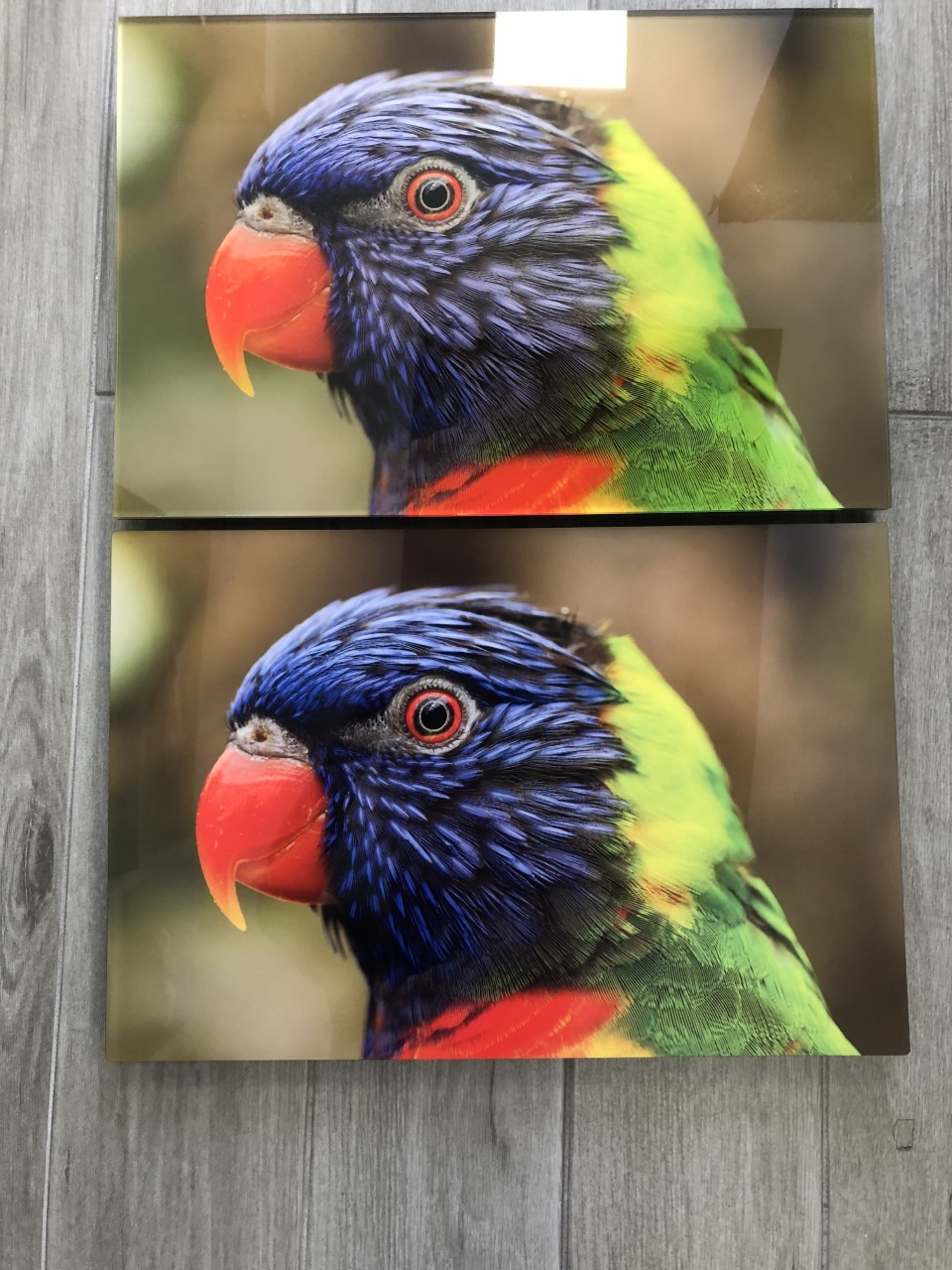 The acrylic print featured on top produces more glare and reflection due to having to look through a thick sheet of glass to see the image. The HD Metal print on the bottom appears sharper and clearer in comparison.
The acrylic print featured on top produces more glare and reflection due to having to look through a thick sheet of glass to see the image. The HD Metal print on the bottom appears sharper and clearer in comparison.
The Cost of Metal vs Acrylic Prints
Naturally, cost can play a major role when choosing between metal vs acrylic prints. Metal prints are going to be the more affordable option between the two. On average, you will find that many professional print labs charge up to three times more for acrylic prints.
If you are looking for high quality yet affordable metal prints, you will find that Shiny Prints have very competitive pricing that allows our artists to offer high quality metal prints to their clients while maintaining excellent profit margins.
Which Print Weighs More?
There is another major difference between metal and acrylic prints and that is the weight of each print. Metal prints are going to be the lighter option between the two. Just to find out how much lighter they really are, we ordered a 12x18 inch acrylic print and compared it to one of our 12x18 inch metal prints. The acrylic print was a beastly 4.37 pounds vs our HD metal print that weighed in at 1.6 pounds. That’s a huge difference.
Acrylic prints can become extremely heavy, especially when creating larger wall prints or gallery displays. Transport also becomes more difficult, making it not suitable for art exhibits. Added to the existing higher cost of acrylic prints, they can become even more expensive when you need to ship them over a great distance.
How Durable Are Metal & Acrylic Prints?
Acrylic is a form of plastic, much like a sheet of Plexiglas. If you have ever worked with Plexiglas then you will know that it is very easy to scratch. There are some professional print labs that offer a scratch resistant acrylic option but at a considerably higher cost.
Extra care must also be taken when displaying acrylic prints. They should never be displayed in high moisture areas, such as a bathroom. If left unprotected, prints are not only susceptible to mildew but also sulfur dioxide, which will cause discoloration. In the humid environment of a bathroom, the sulfur dioxide reacts with moisture in the air to form sulfuric acid, which will damage the photo print beneath the acrylic.
Metal prints are the more durable printing option. They are scratch resistant, waterproof and flame retardant. Metal prints can also be displayed in high moisture areas.
You will also find that it is much easier to wipe off fingerprints and smudges from metal prints than it is from acrylic or glass. This is why metal prints are an ideal option for art galleries, hotels and other public spaces.
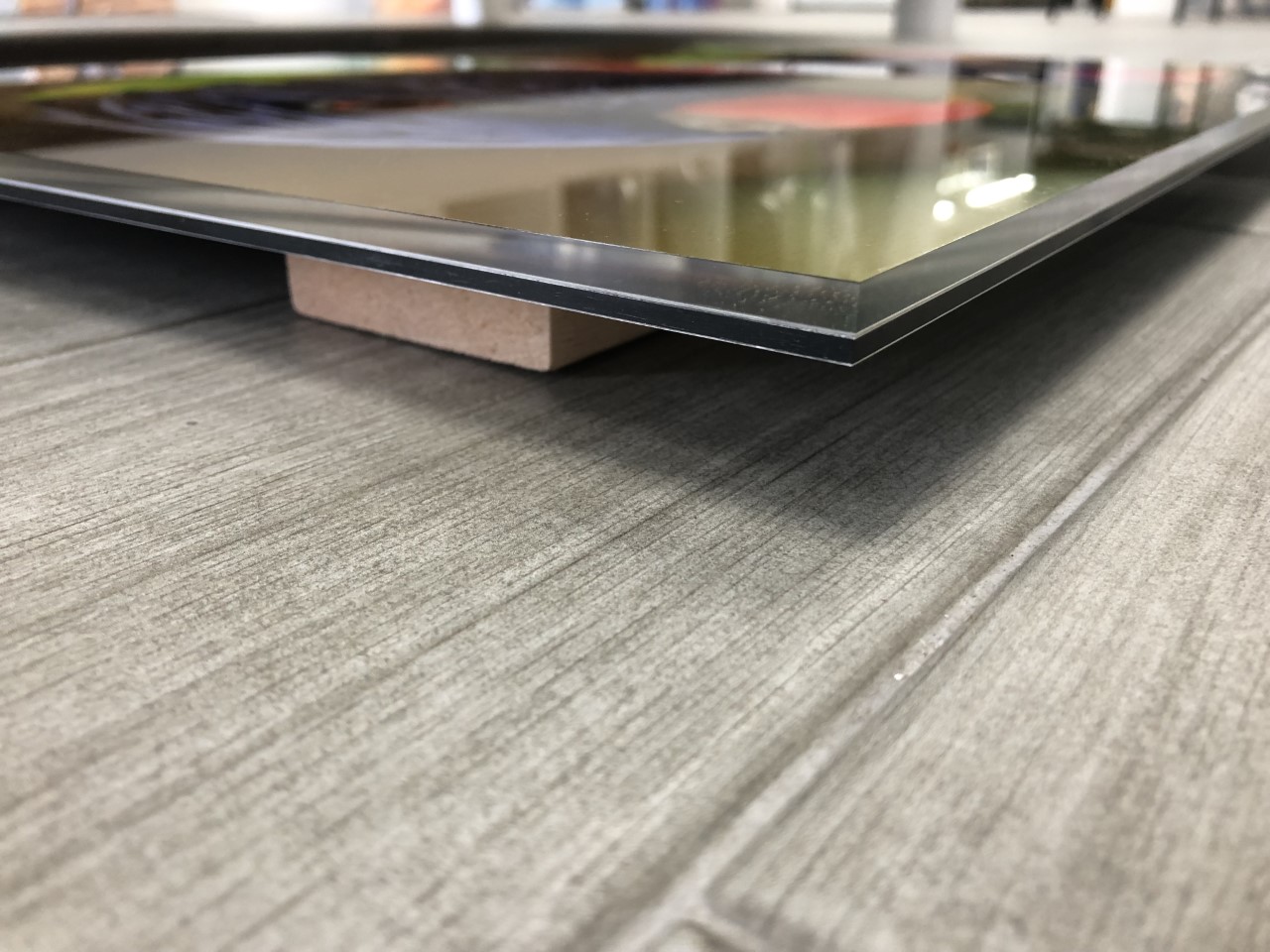
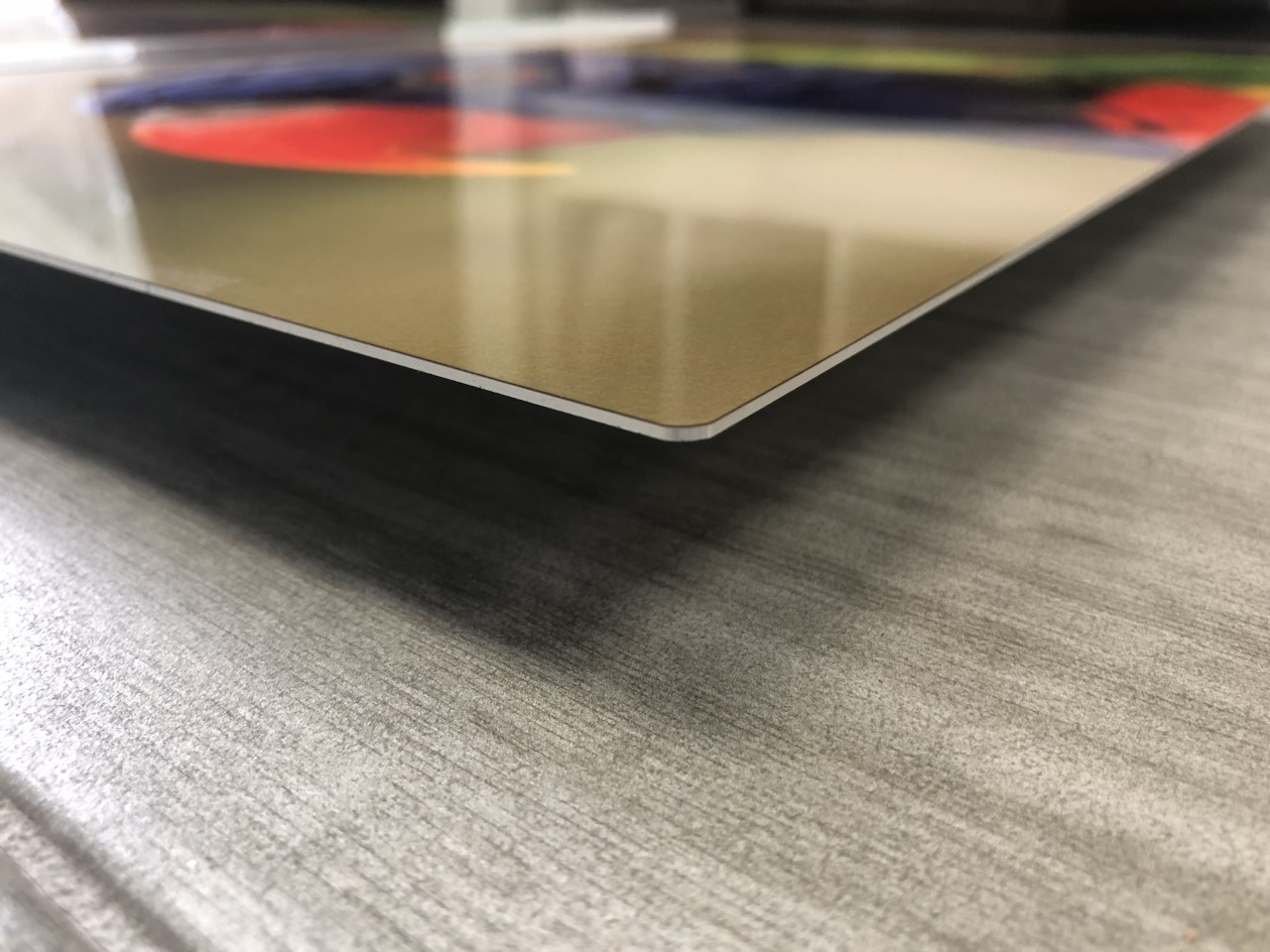
An up close side corner view of an acrylic print on the left and HD Metal print on the right.
The Longevity of Metal vs Acrylic
Testing results show that the image stability of a ChromaLuxe metal print displayed indoors is more than three times that of the traditional silver based photo papers used in making acrylic prints. This was the conclusion of WIR testing, which is the standard testing process in the imaging industry.
Many Kodak papers are advertised as having a life of 100 years. However, that is based off of a far less intense testing process used by Kodak. WIR uses a test method of 450 lux for 12 hours per day. Kodak uses a test method of only 120 lux for 12 hours per day. According to WIR testing standard Kodak Endura silver-halide prints, framed under glass, achieve a WIR Display Permanence Rating of only 19 years. Under the same conditions, ChromaLuxe metal prints achieved a WIR rating of 65 years. There are some archival papers in the 100+ year range but these are all matte or semi-matte papers.
At Shiny Prints, we only use ChromaLuxe brand aluminum sheets for the highest quality possible. If you are concerned with exposure to intense direct sunlight, we also offer ChromaLuxe EXT aluminum sheets that are guaranteed for up to 3 to 5 years outdoors in direct sunlight. Acrylic prints will fade within months, or even weeks, when displayed in direct sunlight.
If you’re interested in learning more about outdoor applications, we’ve put together a ton of great information about ChromaLuxe EXT for Outdoor Metal Print Installations.
Which Has the Best Print Quality?
It is important to note that most people cannot tell the difference between acrylic and metal prints when viewed straight on.
The print quality of actual paper used in making an acrylic print is excellent. These prints can potentially have a slightly larger color gamut and offer the highest quality and sharpest print details. However, they can appear to be washed out when compared next to a metal print. This is due to the fact that you are looking at the print through a sheet of acrylic. The print quality can also vary greatly from one lab to another. There are only few labs in the nation that can do acrylic prints properly. It is wise to check company reviews before selecting your acrylic print lab.
Metal prints can have a slightly softer overall look to them. During the sublimation process, ink droplets expand ever so slightly. This causes the metal prints to look softer than acrylic, which is printed directly onto traditional photo paper. The softness is only noticeable when viewing very closely and can actually benefit larger prints as it can soften some of the more pixelated areas. You will find that metal prints have the best blacks of any of the printing processes.
Metal & Acrylic Print Options
The fact that acrylic prints are made from a traditional paper print, mounted under an acrylic sheet, allows you to choose from various types of paper such as luster, metallic or glossy. There are a few print labs that can even mount your photos under a matte finished glass for a softer look. Another unique feature is the ability to make acrylic prints appear to glow when back-lit with custom lighting.
With metal prints, the surface of the metal is what impacts the vividness of the image. By choosing a white surface, your photos will have bright, vivid and rich color tones. The white base surface also helps to ensure that the color tones are very accurate. This makes the white surface perfect for newborn photography, senior pictures, wedding photos and any other form of portraiture.
When you choose a silver surface, it allows the metal to show through the highlights of the image. That means that high-contrast images, especially black and white photos, really stand out on a silver surface. Keep in mind that your highlights will not be as bright due to the metal showing through them. We advise that you display silver surface prints in a well lit room, allowing the metal to reflect a lot of the light. Placing a silver surface print in a dimly lit room can cause the photo to appear much darker, in some cases.
The finish that you select for your metal prints also has an impact on how your photos will look. Dramatic images that have rich colors and contrast will really pop with a glossy finish. If you are looking for a softer and glare-free look, a matte finish is going to be a better choice for your image.
Important Points to Keep in Mind
Metal prints are more affordable than acrylic prints. Some print labs charge three times more for acrylic prints than we do for metal prints.
Metal Prints are lighter in weight. Our 12x18” HD Metal Print weighed only 1.6 pounds, where the acrylic print of equal size weight 4.37 pound.
When compared side by side, acrylic prints can appear washed out compared to our HD Metal Prints. This is because you have to look through the thick acrylic to see the paper print beneath. The HD Metal print has nothing interfering with its view, giving it a vibrant 3D appearance and superior quality.
Because they are extremely heavy and can be easily scratched, even when taking precautions, acrylic prints are not the ideal choice for art shows or frequent transport.
WIR testing results have shown that the image stability of a ChromaLuxe metal print displayed indoors is more than three times that of the traditional silver based photo papers used in making acrylic prints.
So Which Print is Right for You?
We hope that this article gives you a better insight into the differences of metal vs acrylic prints and helps you to decide which medium is the best match for your specific needs.
If you are looking for a specialty print that is cheaper, lightweight, more durable and produces high definition prints that last longer – metal prints are clearly the winner.
If you are still having trouble determining the best solution for you, please feel free to contact us with any questions that you might have.
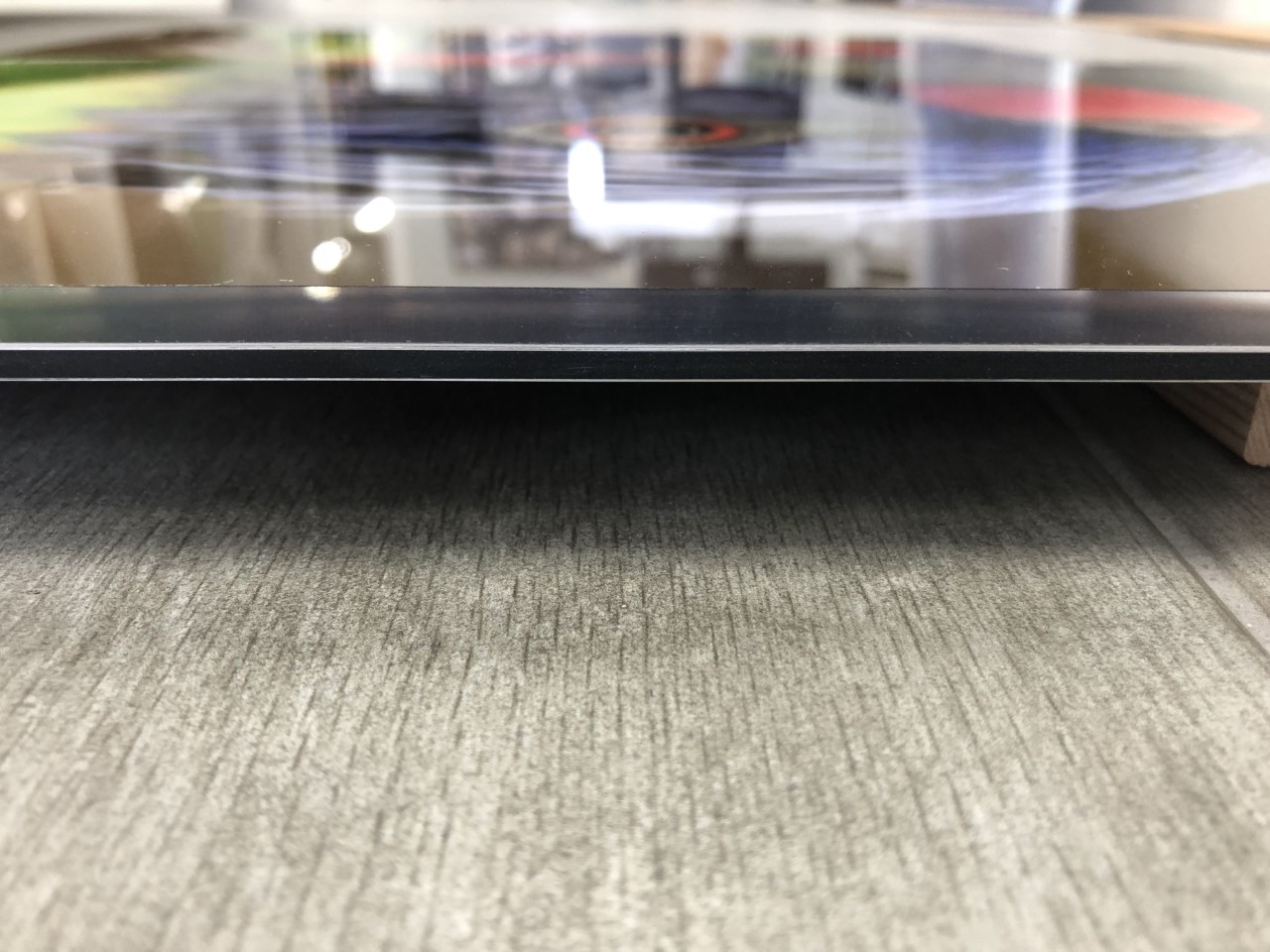
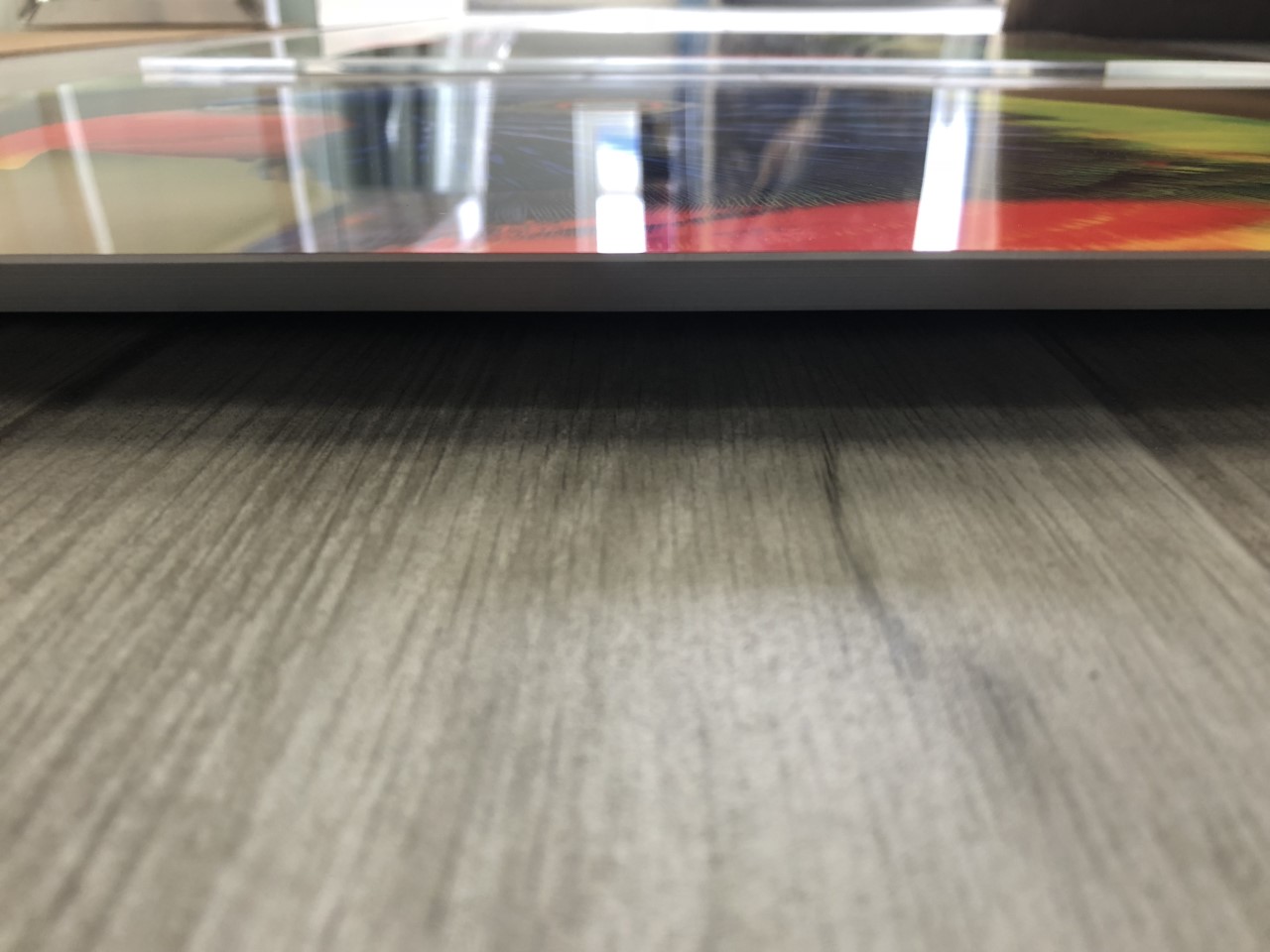
An up close side view of an acrylic print on the left and HD Metal print on the right.



